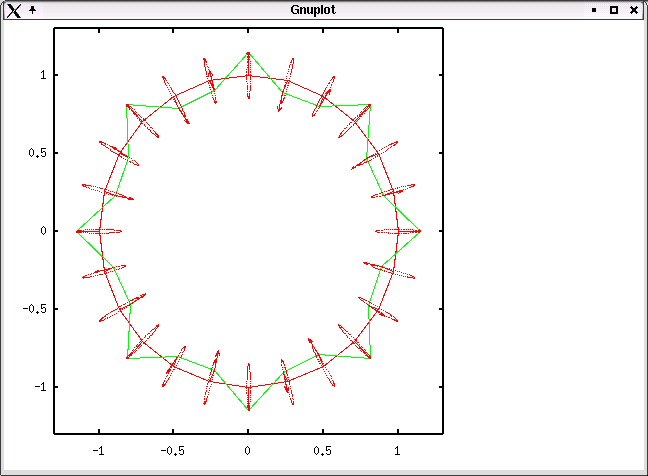Now I'm ready to show my results. All of these are from the 24-node model. All frequencies are in radians/second. The ring rotation rate (omega) corresponds to a period of 9 days. The period of the first mode is 21.4 days.
First 32 natural frequencies in radians/second (omega = 8.101607E-0006):
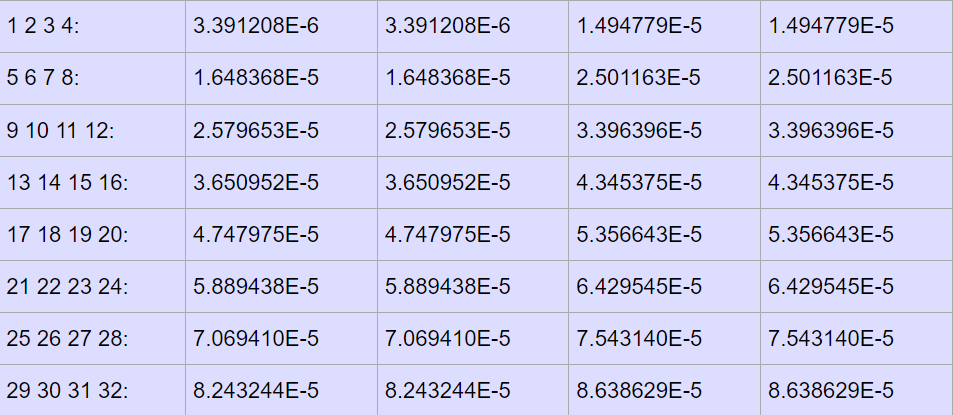
The corresponding periods in days are (rotation = 8.976250):

The mode shapes: The red near-circles (24-sided figures) are the undeformed shapes. The green figures are exaggerated deformed shapes. The dotted ellipses are the paths of the deformed nodes. Short red lines connect the undeformed node positions to the deformed positions. Red arrows show the velocities of the nodes.
The first mode (two phase angles): Damn, another learning experience. It does indeed look elliptical, but notice that it rolls around the Ring rather than being harmonic. My "mode 2" is actually 90 degrees behind "mode 1."

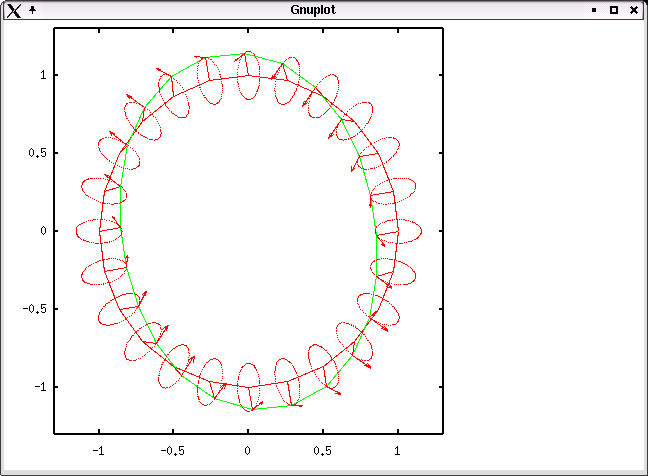
Here's what they look like with phase angle offsets of 45 degrees:
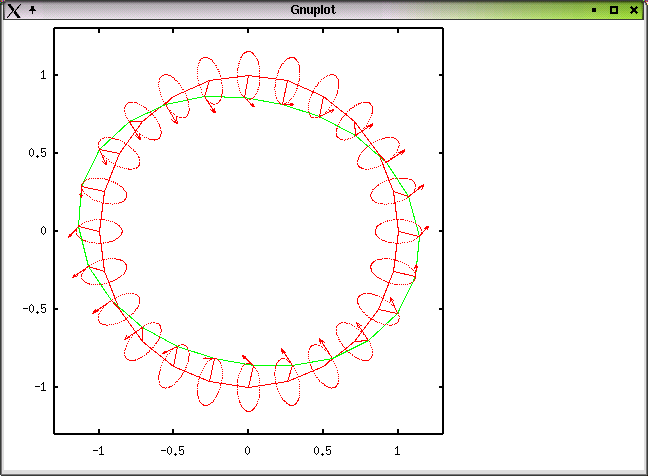
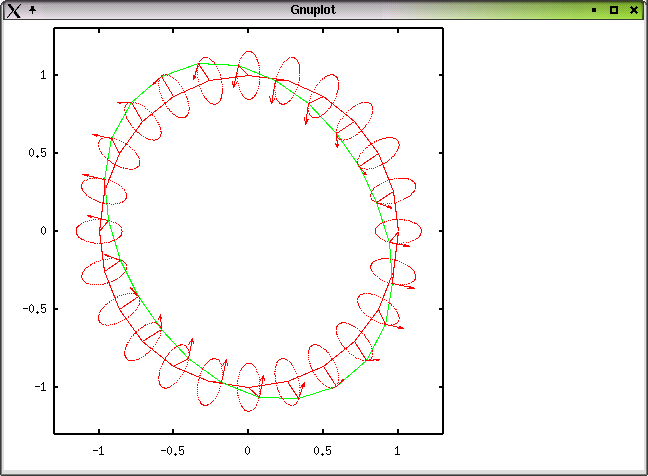
Here's the next mode pair. Oddly, this three-cornered posigrade mode has a lower frequency than the retrograde elliptical mode that I was expecting would be next:

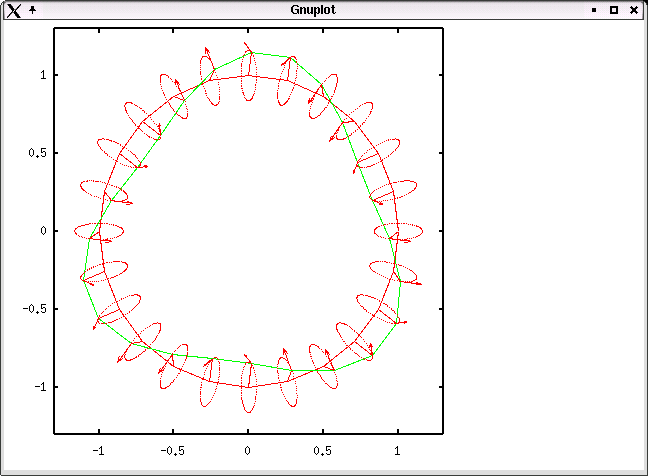
And here is the expected retrograde three-cornered mode pair.
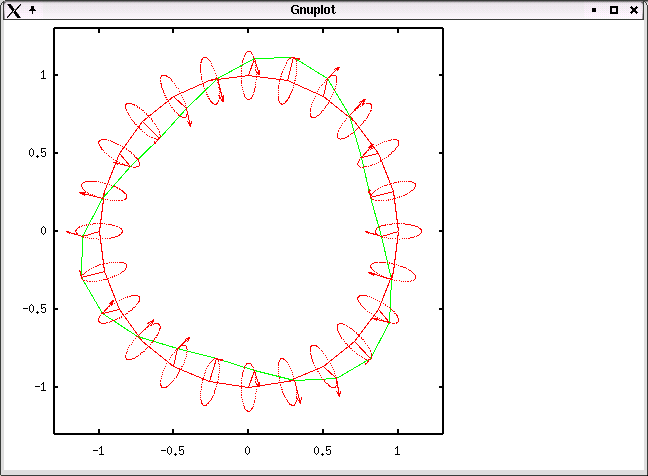
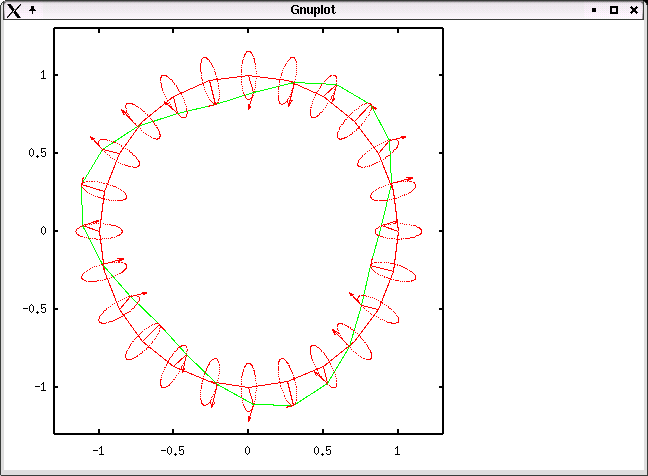
Now they start to come in a predictable pattern. Here are the four-cornered posigrade and retrograde modes:
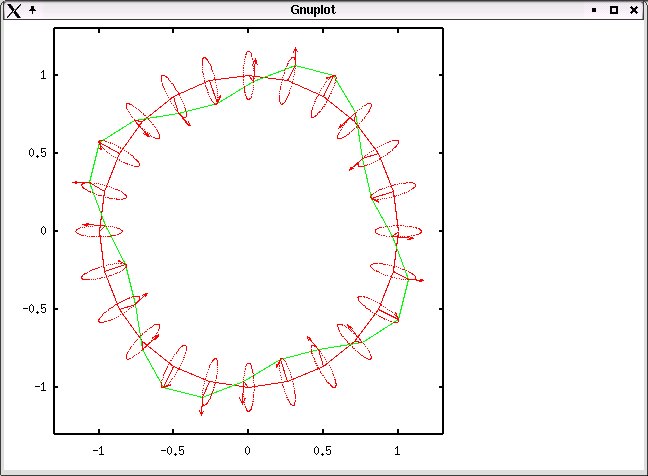
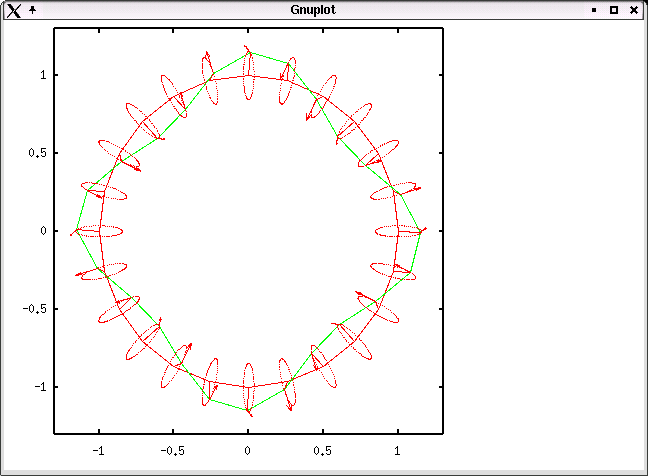
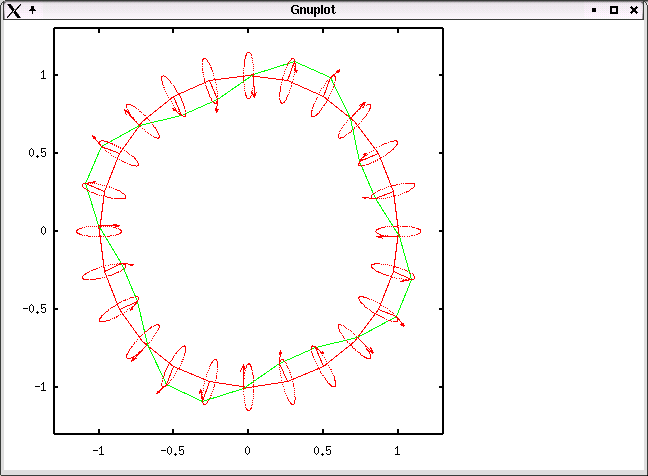
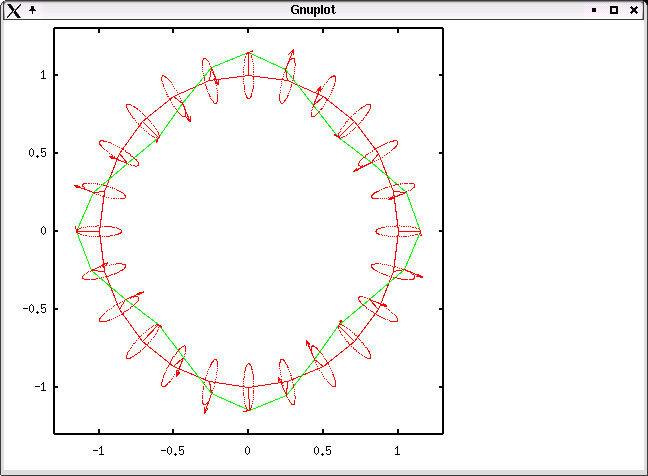
Here is a pentacle for Carol (mode 13 with a 190 degree phase angle offset):
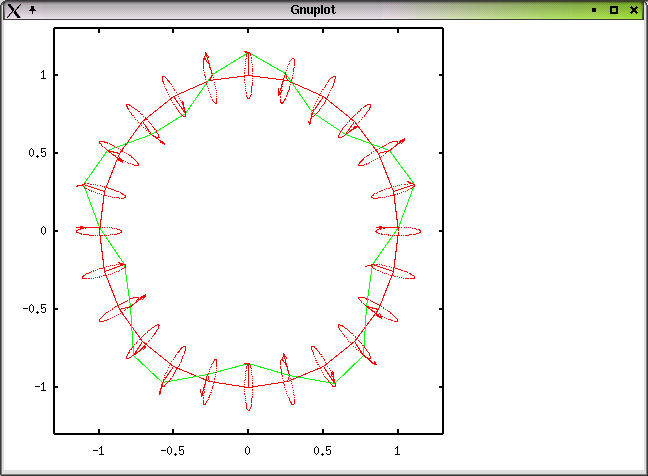
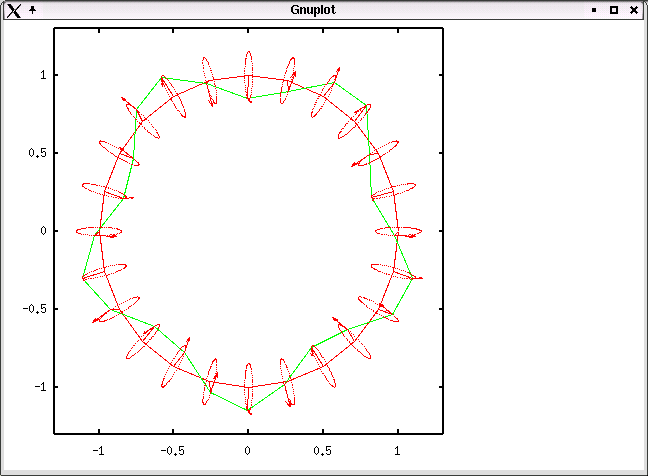

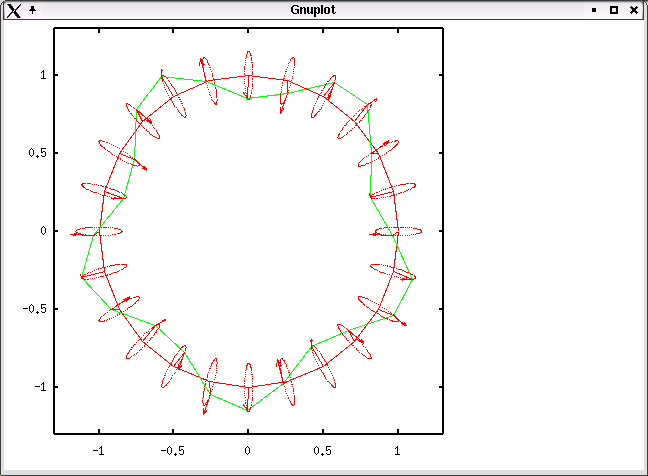
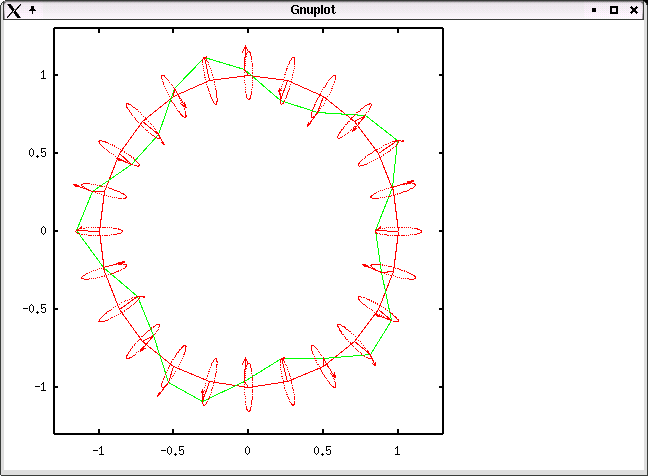
Here is some striking visual evidence that the "Tnuctipun plot" that has been bandied about on the Niven list is wrong. The Ringworld appears to have been built by the lost tribe of Israel as some sort of signalling device.
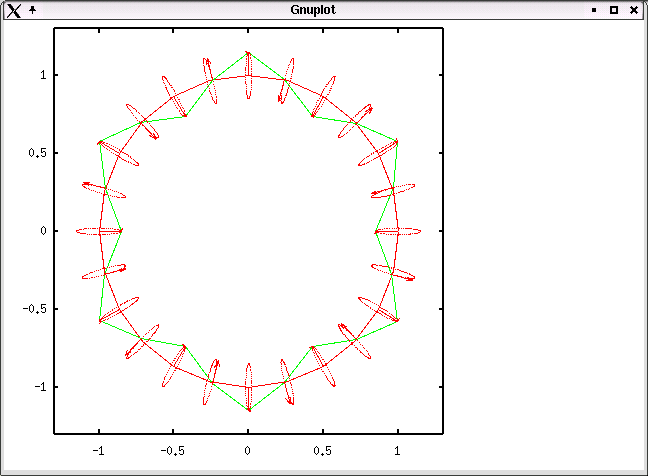
Or maybe by the Sheriff's Department?
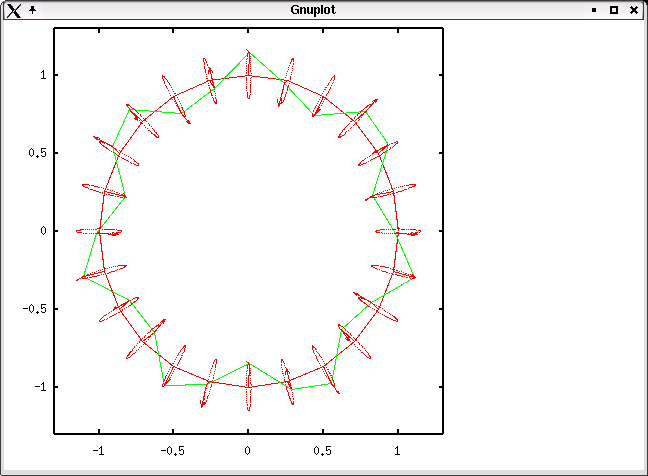
A predictable eight-pointed star:
Or was it built by the Ba'hai?
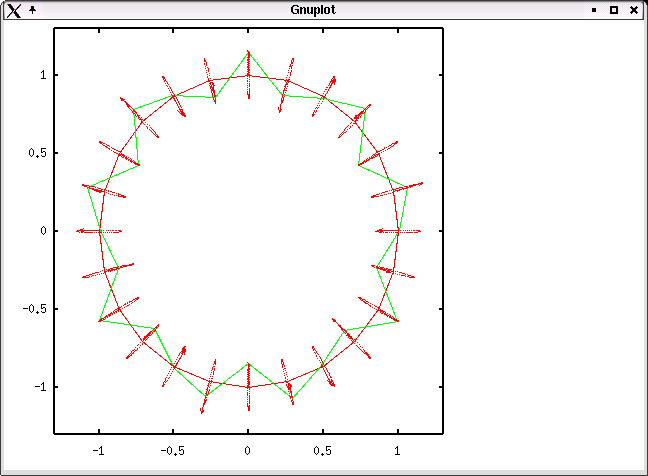
As you can see, 24 nodes isn't enough to get good representations of these more complicated mode shapes. But it seems good enough for the first handful.
Or maybe not. You know, I think we should build one and test it....
Comments? Peter Taylor may be reached at: peter.a.taylor with the suffix @earthlink.net

